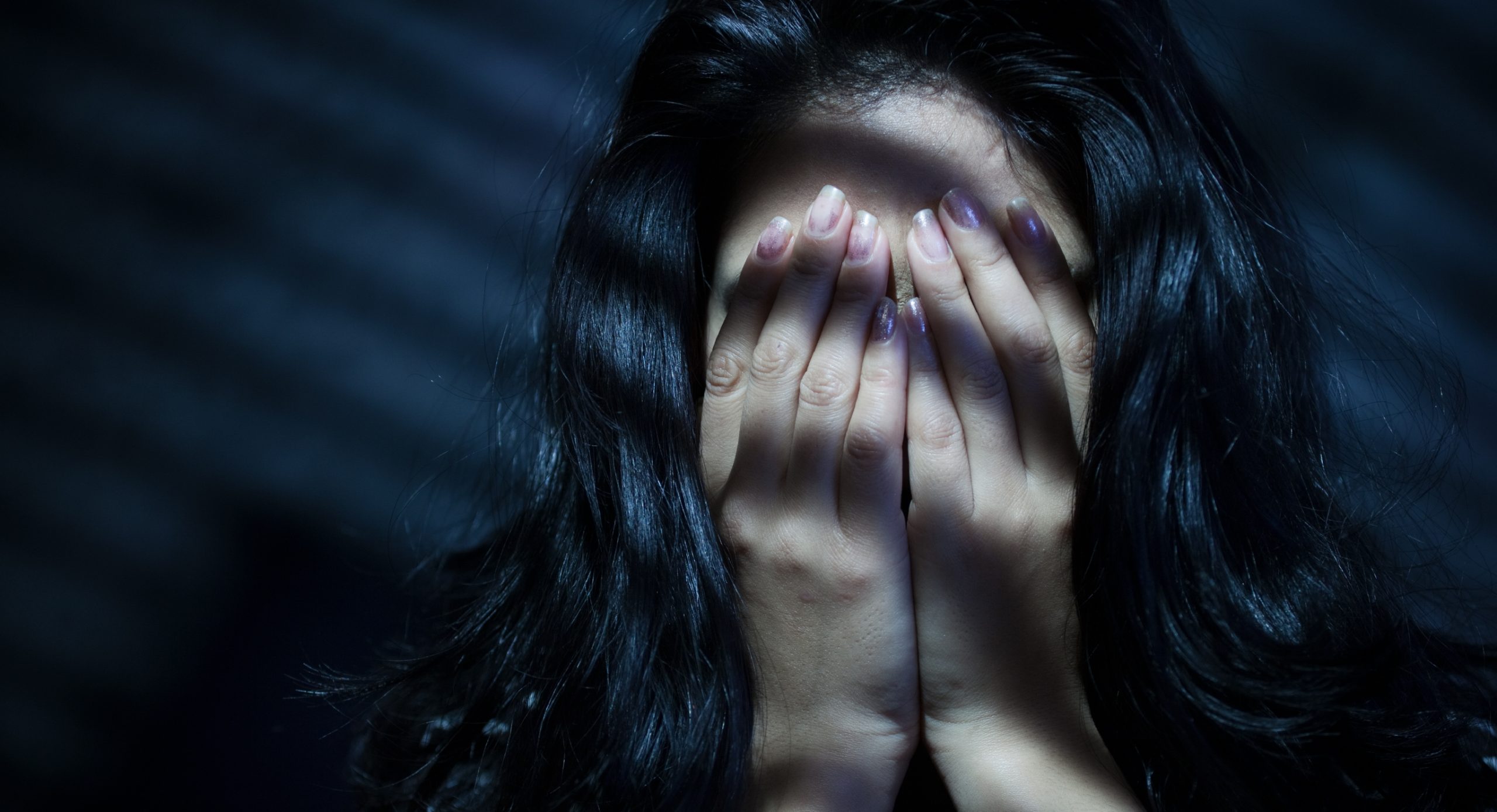Mental Health Masking: What It Means and How to Recognize It
Reading Time: 8 minutesWe all mask our true feelings at times to hide our vulnerability. Even though we may be worried about money, angry at a friend, blue from a break-up, or exhausted with work, we still answer “Fine” or “Good” when people ask how we are.
People with mental health issues, however, may routinely hide their true emotions beneath a “mask.” Over time, the consequences of concealing their real feelings can be detrimental to their well-being. This is known as mental health masking.
Key Takeaways
- Mental health masking means camouflaging or suppressing your mental health symptoms so you fit in with others.
- People mask their mental health symptoms because they want to maintain their relationships, keep their jobs, and be socially accepted.
- It can be hard to identify mental health masking because people who mask behave as if they don’t have a mental health issue.
- Long-term masking can increase stress, anxiety, depression, and suicidal thoughts and behavior, especially among those with autism.
What Is Mental Health Masking?
When people try to cover up or suppress their mental health symptoms to blend in with others around them, it’s referred to as mental health masking or “camouflaging.” While some people mask their emotions and personality traits intentionally to fit in, others do so unconsciously.
Why do people hide their emotions, particularly if they are difficult or painful ones? In their families or communities, they may have received negative feedback for appearing sad, fearful, or confused. Wanting acceptance, they create compensation strategies to ensure others cannot see their true selves. That might mean donning a happy face when they’re anything but.
Masking and Hidden Depression
One example of masking is hidden depression, also known as smiling depression. This type of depression is marked by an absence of visible symptoms. Hence, people with hidden depression may appear cheerful and jovial on the outside. And they may do well at work or in school. Moreover, they may succeed socially, maintaining a large circle of friends. But they deliberately hide their melancholy and despondency because they fear how others will perceive them. Other times, people with hidden depression are so detached from their pain they aren’t even aware they’re wearing a mask.
Hidden depression is not formally recognized as a disorder by the Diagnostic and Statistical Manual of Mental Disorders. But it can have life-threatening consequences. People who are unconsciously denying their distress and don’t seek treatment may eventually experience a mental health crisis.
Questions?
All calls are always confidential.
Types of Mental Health Masking
Masking is a learned behavior that looks different from person to person. For some, it may include adopting particular facial expressions and body language. For others, it’s more behavior focused. Here are some common ways people mask their true identities:
Social Masking
Engaging in social behaviors that don’t come naturally is a form of social masking. Some people change their tone of voice or communication patterns. Others laugh at jokes they don’t understand or pretend to like activities they don’t enjoy just to fit in. Putting on a happy face to cover up painful feelings is a social masking behavior as well.
Behavior Masking
People with attention deficit/hyperactivity disorder (ADHD) may mask at work. For example, they may hide fidgeting or stimming behavior. These behaviors are repeated movements or words that people with ADHD may use to cope with stress and anxiety. Behavior masking would include consciously avoiding repetitive motions like bouncing a leg up and down or clicking a pen so as not to irritate colleagues.
Compensation
Another type of masking behavior involves hiding the effort needed to get something done. People compensate for a mental health issue by spending more time and energy than others. And they may hide how much extra effort they’re expending to stay on track. This is a common strategy among people with ADHD and autism spectrum disorder (ASD).
Why Do People Mask Mental Health Issues?
In a nutshell, people mask to protect themselves from the backlash—real or imagined—that may occur if family, friends, and colleagues see their true selves. Social acceptance is a huge reason for masking mental health symptoms. The motivation isn’t hard to understand. Look at social media. It’s obvious we live in a culture that celebrates success and “living your best life.” Hence, people often mask mental health issues due to social pressure. They may feel ashamed they’re not doing as well or feeling as upbeat as their peers.
Wanting to belong and connect with others, they may engage in people-pleasing to mask mental health issues. Or they may disguise their natural personality at school or work for fear of being disruptive. Believing that no one could possibly understand them, they tuck their feelings inside so as not to worry or burden others. Wearing a mask seems easier than being real.
Some people mask mental health symptoms to maintain relationships. They’re afraid of how loved ones or close friends will respond if they don’t display positive emotions. So they engage in masking behaviors as a form of protection. People who have experienced verbal, emotional, or physical abuse may be especially inclined to wear masks. Their goal is to avoid the negative reactions they might receive should their symptoms be revealed.
Others mask out of economic necessity. They may cover up anxiety disorders or depressive symptoms in front of colleagues or supervisors. Not wanting their competence to be called into question for fear of losing their jobs, they camouflage their inner turmoil. This type of behavior is especially common among neurodivergent individuals.
Know the Facts
Camouflaging autistic traits is associated with an increased risk of lifetime suicidality.
Neurodivergence and Mental Health Masking
The umbrella term neurodivergence refers to individuals whose brains function and learn differently from the norm. Learning disabilities, ADHD, Down syndrome, epilepsy, obsessive-compulsive disorder, and autism are examples of neurodivergence. People with one or more of these conditions may mask to protect themselves from harassment, discrimination, or having their disability “outed.” Autistic masking is especially common.
What is Autistic Masking?
When autistic people consciously or unconsciously suppress their natural behavior and responses, this is autistic masking. They know their reactions and behaviors may be viewed as inappropriate. Thus, they hide or control them in order to be accepted and fit in.
Some examples of autistic masking include:
- Memorizing and acting out social scripts and nonverbal body language they’ve seen in person or on TV
- Faking smiles or laughter when faced with uncomfortable situations or environments
- Quelling natural physical responses (such as flapping or rocking) to emotions and states of energy arousal
- Suppressing stimming behavior (the repetition of physical movements, words, or sounds to self-soothe)
- Resisting their own needs and preferences
- Relying on others to talk and make decisions when in a group
- Attempting to control all aspects of social situations to ensure greater predictability.
In some cases, autistic masking may prevent autistic adults (and children) from experiencing the stigma of autism. But the energy it takes to conceal their true identities takes a toll on their self-esteem and self-worth. Autistic women are especially at risk, as they mask to a greater extent than autistic men. Long-term masking can lead to serious physical and mental health problems.
How to Recognize Mental Health Masking
According to the National Institute of Mental Health (NIMH), nearly one in five adults in the United States suffers from a mental illness. Despite how common mental health conditions are, not everyone knows how to identify them. Identifying masking behavior is even more difficult because people who mask behave as if they don’t have a mental health problem.
People who mask act in opposition to how they feel inside. Someone with an anxiety disorder may be very talkative even though talking to people makes them uncomfortable. A person who’s depressed may smile a lot to hide their sadness. An individual with ADHD may attempt not to fidget or talk too much. Or people with autism spectrum disorder may try not to stim or may keep their unique interests to themselves.
While it can be difficult to identify people who mask, “maskers” may not even realize they’re wearing a mask because their behavior is unconscious. Unaware they’re concealing mental health symptoms, they may also be unaware of the impact masking has on their mental health.
Here are some signs you or someone you know may be masking:
- Looking to others for clues around how to behave; mirroring others’ facial expressions and behaviors
- Rehearsing or preparing scripted responses to questions and comments that may come up in social settings
- Suppressing certain body movements for fear they will look odd and other people might react negatively
- Needing to spend time alone after social engagements to decompress and feel like oneself again.
The Impact of Mental Health Masking
Hiding your feelings, altering your facial expressions, copying others’ behavior—essentially being inauthentic—is taxing for anyone. That’s true regardless of whether you have a mental health condition or not. Increased stress, depression, and anxiety are some of the potential effects of masking. The loss of your sense of identity is another. Overall, however, long-term masking may cause autistic people the most harm, research shows.
A recent online survey analyzed the effects of masking in autistic people, neurodivergent people without autism, and neurotypical (non-autistic) people. All groups reported that masking made them feel disconnected from their true selves. Both autistic and non-autistic people said masking made them exhausted and unhappy. Only autistic people, however, said masking sometimes made them feel suicidal. Another study found that camouflaging autistic traits is associated with an increased risk of lifetime suicidality.
In addition to the mental health concerns masking poses, people who mask may struggle to receive appropriate support for their conditions. That’s because they hide their symptoms so cleverly that even professionals can’t recognize them. This is more common among autistic women. They sometimes don’t even receive an accurate diagnosis of autism because they are able to accurately mimic the behavior of their neurotypical peers.
If one person had asked, 'How are you?' I would’ve broken down crying, let it all out, take off my mask, and say I was far from okay. That I desperately needed someone, anyone. That I was drowning. But, that didn’t happen. So, I just kept the mask on. I acted like I was completely fine, still wanting to fit in and be accepted by people who I should have wanted nothing to do with, and pretended that everything was okay ... that I was okay. Wearing my mask from one location to the next, with nowhere to take it off.
Personal story contributed to the National Alliance on Mental Illness
How to Support People Who Mask Mental Health Symptoms
Offering support to friends or loved ones who may be wearing masks is a delicate endeavor. It’s important to remember that not everyone wants support. Not everyone may be ready or able to remove their mask. Some people have been concealing their feelings and identities for so long they don’t know the difference between their masks and their true selves.
With that in mind, share your concerns in private at a time when you won’t be rushed. The way you approach the conversation affects the outcome. Try to be as sensitive and compassionate as possible.
Here are a few suggestions to increase the chances of having a productive conversation:
- Express your concerns in a nonjudgmental way, offering examples of your friend or loved one’s behavior that worry you. Once you’ve voiced them, be quiet. Allow your friend or loved one to respond.
- Listen actively. Don’t interrupt. Focus on what your friend or loved one is saying. Strive to understand what they’re experiencing rather than offer up a solution.
- Validate their feelings. Don’t belittle or minimize them. You might simply say, “That sounds really hard.”
- Ask open-ended questions such as, “Can you describe what you mean?” or “Can you tell me more about how that feels?”
- Assure your friend or loved one that you care and that you’re there for them.
- Ask if there’s anything you can do, such as helping them to locate professional support.
- Don’t pressure them to share more than they feel comfortable with.


Treatment for Young Adult Mental Health at Newport Institute
At Newport Institute, our team of clinicians, medical experts, and experiential therapists address and heal a wide variety of mental health conditions. Part of the healing process involves helping young adults speak openly about their feelings, overcome whatever shame they may be carrying, and realize they are not alone.
We are aware that even well-trained professionals can fail to recognize mental health masking.
Thus, our integrated care team works collaboratively to conduct in-depth assessments and formulate tailored treatment plans for every client. Each young adult’s treatment plan incorporates a variety of evidence-based and empirically supported clinical and experiential modalities to support healing and growth. These include Cognitive Behavioral Therapy, mindfulness, EMDR, family therapy, and creative arts therapies.
Contact us today to find out more about our specialized care for young adults.
Frequently Asked Questions
What is masking behavior?
How can you tell if someone is masking?
What is neurodivergent masking?
Is masking an ADHD trait?

